| Changes to ensemble members | Albedo changes | Orography changes |
| Changes to ensemble members | 
Figure 1:
| 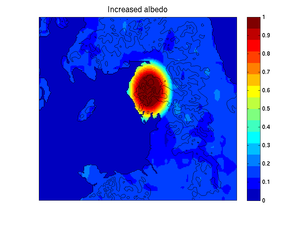
Figure 2:
| 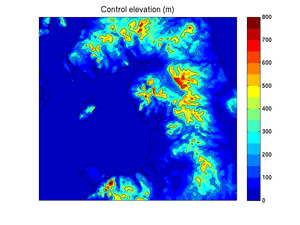
Figure 3:
| 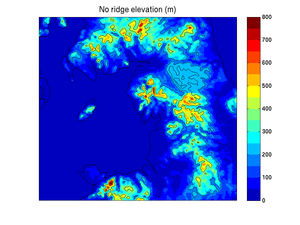
Figure 4:
|
| |
| The first four figures above show the changes made in the models from which output is shown below. Two experiments are shown - first where the albedo of the lake district is significantly increased (compare figure 2 with figure 1, noting the change in colour scale) and secondly where the orography of the northern yorkshire dales has been reduced to remove the barrier on the east side of the valley - heights above 200 metres have been reduced to 200 m. |
| |
| Plot description | pert09 | pert17 |
| | High Albedo | No Ridge | High Albedo | No Ridge |
| Rainfall accumulations from control ensemble member | 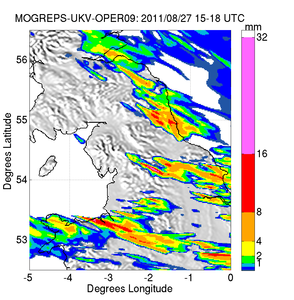
Figure 5:
| 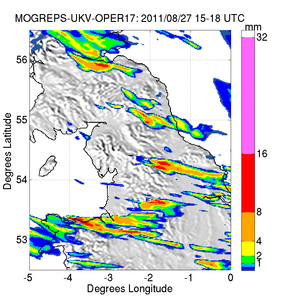
Figure 6:
|
| Rainfall accumulations from modified ensemble member | 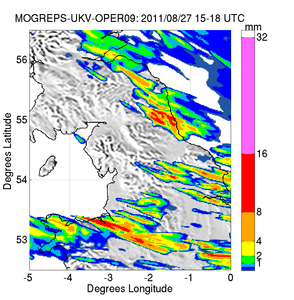
Figure 7:
| 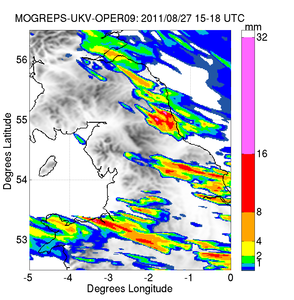
Figure 8:
| 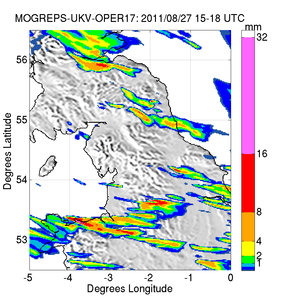
Figure 9:
| 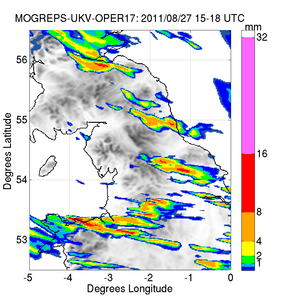
Figure 10:
|
| |
| Figures 5-10 show the rainfall accumulations from 15-18UTC from the models. Figure 5 and 6 show the control ensemble rainfall for the 2 ensemble members and figures 7-10 show rainfall accumulations from the modified ensemble members. In all 4 model runs the rainfall changes substantially from the control simulation, reducing the amount of rainfall in the region of the observed band. Some banded structure is still present in figure 7 although the total accumulations are much lower than the control ensemble. In the simulations with reduced terrain height of the Yorkshire Dales the banded structure still exists although is less well organised. |
| |
| Temperature change from control | 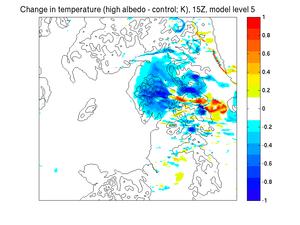
Figure 11: | 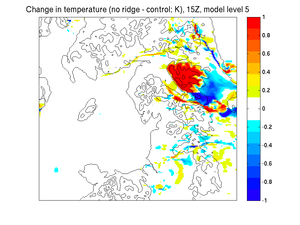
Figure 12: | 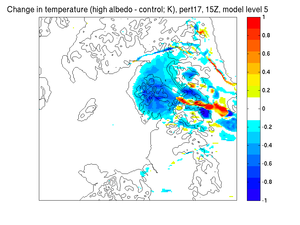
Figure 13: | 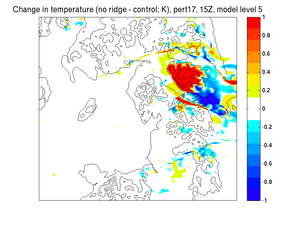
Figure 14: |
| Change in u component of the wind | 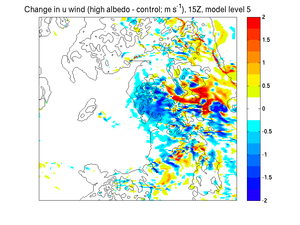
Figure 15: | 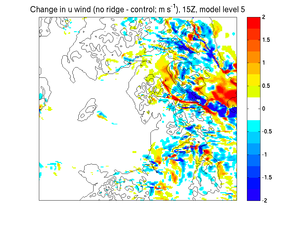
Figure 16: | 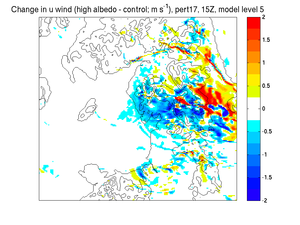
Figure 17: | 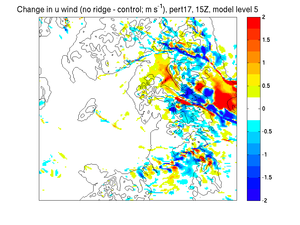
Figure 18: |
| Change in v component of the wind | 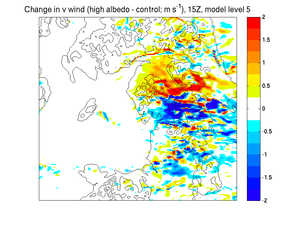
Figure 19: | 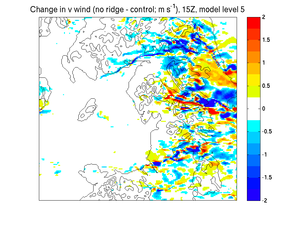
Figure 20: | 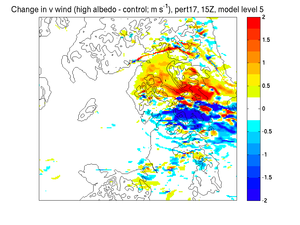
Figure 21: | 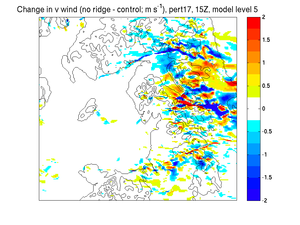
Figure 22: |
| |
The 12 figures above show the change in wind or temperature when the model changes are made. Most striking is the change to the v wind field (and to some extent the u wind field) of the changed albedo runs (figure 19 and figure 15). They show a significant divergence of the anomalous wind along the axis where the band is observed. The pattern and magnitude of this change in wind is very similar in both pert09 (figure 19) and pert17 (figure 21), suggesting a systematic response to the observed cooling of 0.5 - 1 deg C observed over the Lake District as a result of the increased albedo and hence reduced sensible heat flux. This, together with the changes in the rainfall field suggest that the response to elevated heating is very important in these ensemble memebrs in producing the band.
The wind field in the simulations with reduces terrain heights show stronger, more zonal wind in the valley (east of the Lake District) and a narrow region of increased wind speeds under where the band originally formed. This narrow region could be as a result of a small Northward shift in the position of the convergent line, although this hasn't been confimed with data yet. |
| |
| |
| 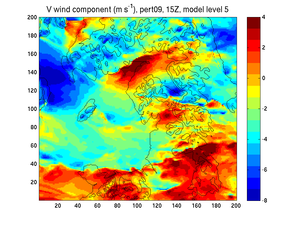
Figure 23:
| 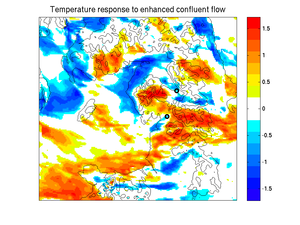
Figure 24:
| 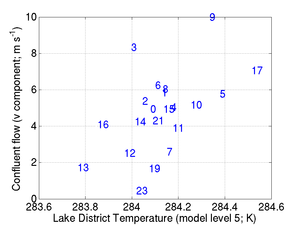
Figure 25:
| |
| |
| The final 3 figures attempt to use the control ensemble as a whole to look for a similar elevated heating response. Figure 23 shows the simulated v wind field at 15Z showing convergent flow in the region of the band. Figure 24 shows the sensitivity of the convergent(I guess confluent strictly) v wind component at the two points marked with a black circle to the temperature field. This shows a nice response with stronger convergent flow associated with warmer temperatures over the Lake District and downstream. Figure 25 shows a scatter plot of the data in figure 24, the x-axis values are calculated from a 10x10 gridpoint average of the temperature centred over the Lake District and the y-axis values are calculated by differencing the v wind component at the location of the two black circles in figure 24 (southerly point minus northerly point). This shows a strong relationship between the strength of the convergent flow and the temperature of the air over the Lake District suggesting that the response to elevated heating may be controlling the spread of the ensemble's banded rainfall (although the link through to banded rainfall from convergent flow isn't yet complete). |
| |
























